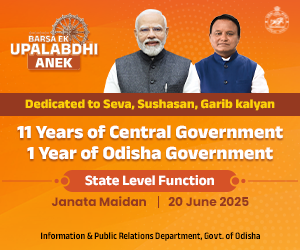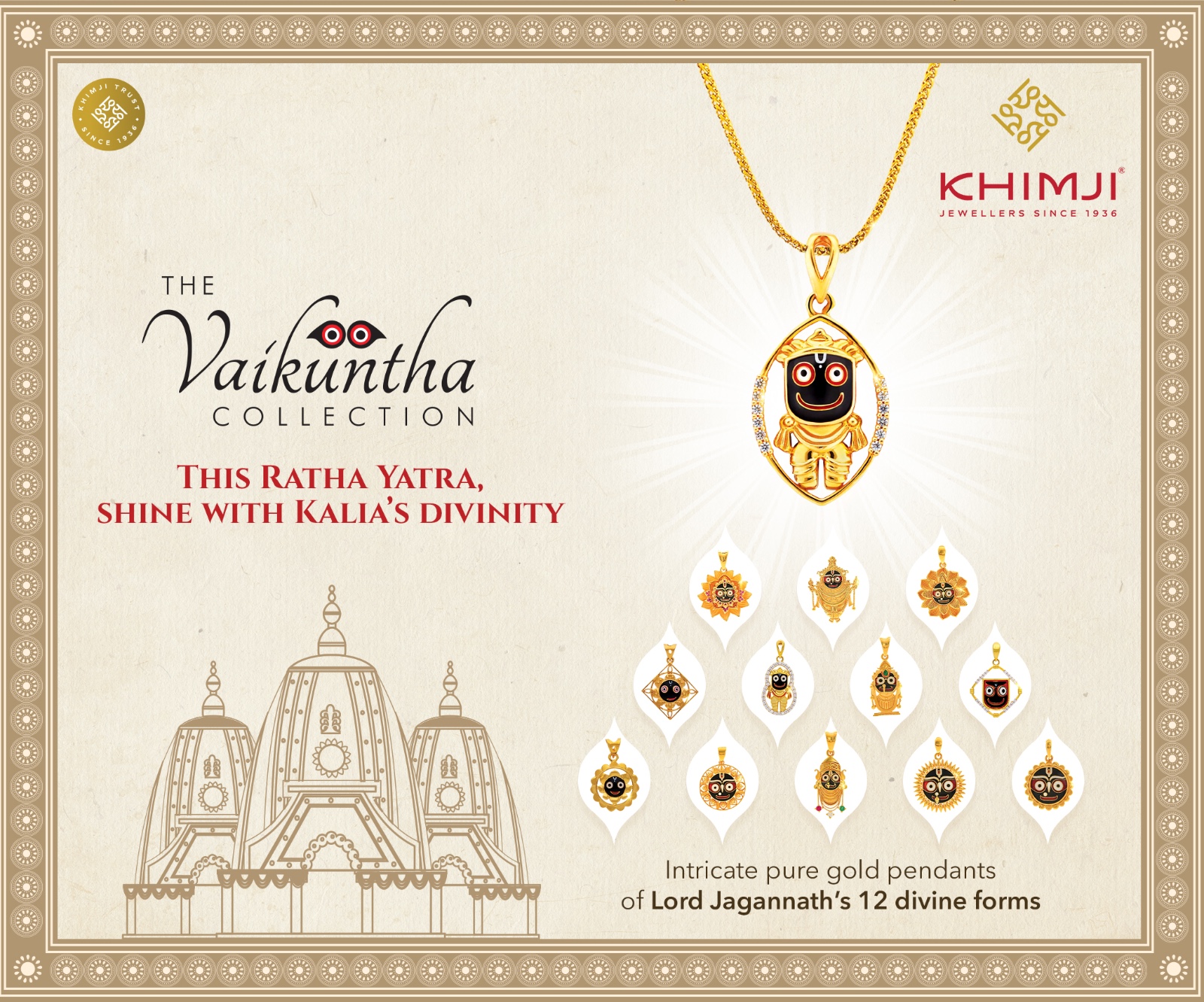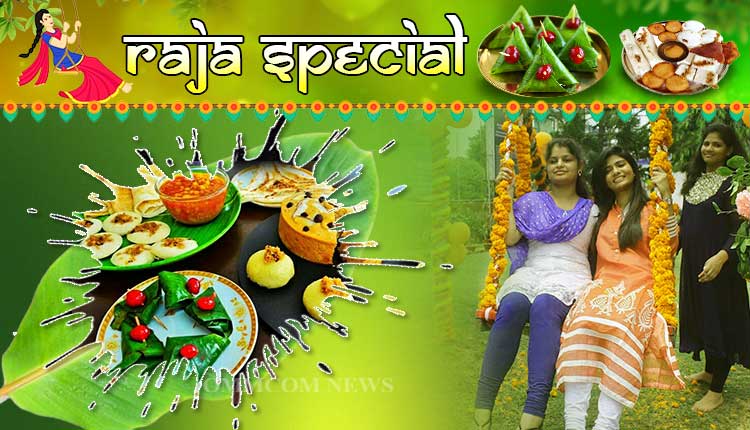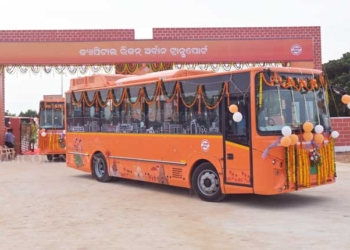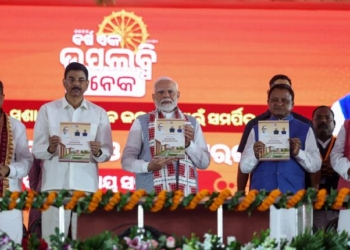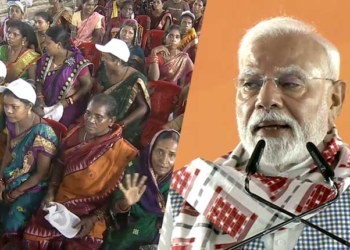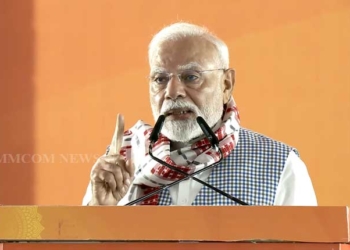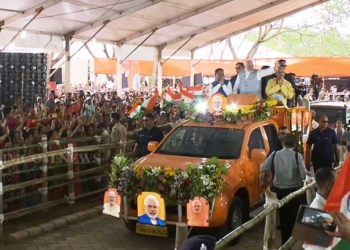Bhubaneswar: The term ‘Raja’ has its origin in the Sanskrit root word ‘Rajaswala’ meaning menstruating. The Raja festival is the celebration of menstruation and is celebrated in the month of Asadha, which falls in the second week of June. It is the beginning of the Solar month ‘Mithuna’ as per the Odia calendar and thus, it is also called ‘Mithuna Sankranti’. Raja is also an agrarian festival and marks the beginning of the agricultural season.
The arid soil receives the much-needed water for agro-production. This festival marks the first shower of the monsoon. This first shower of monsoon rain is metaphorically seen as the menstruation or Raja of Mother Earth. Raja is celebrated to underline the significance and the symbolic relation of the first rain for crop production. As menstruation is a sign of fertility in women, rainfall is a sign of fertility of the land as it improves crop production. Mother Earth also undergoes menstruation as the women menstruate.
This three-day-long festival is considered to be the menstruating period of Mother Earth and is celebrated with zest and zeal. No agriculture-related work is done to give Mother Earth complete rest. The land is left untouched and given rest during this complete period.
According to a belief of Odia tradition, ‘Bhudevi’ is considered the wife of Lord Jagannath, who is revered as the ‘Lord of the whole universe’. During this period, Bhudevi, a form of Goddess Lakshmi, undergoes menstruation. It is believed that the essence of the Goddess is present in all the girls and women; therefore they are worshipped during this period.
The first day of the festival is known as ‘Sajabaja’ in the regional language Odia. On this day, houses are cleaned and all the preparatory works are done, which includes arranging food items, grinding spices, etc.
The celebration begins with ‘Pahili Raja’ or the first day of the Raja festival which falls on the last day of ‘Jyaistha’ month. The next day, that is the first day of the ‘Asadha’ month of the Odia calendar, ‘Raja Sankranti’ or the ‘Mithuna Sankranti’ is celebrated. The third day of this festival is called ‘Basi Raja’ or the ‘Bhudaaha’. The festival ends on the fourth day with ‘Basumata Raja’. On this day, women and girls take baths using turmeric, clay, etc. to denote ‘Bhumi’ or the Earth. This special bath is termed ‘Basumata Snana’.
During this festival, women and girls are forbidden to work so that they get complete rest. They go out, play different traditional games and enjoy this festival in whatever way they want. Young girls wear new dresses and apply ‘alata’ on their feet. Married women wear jewellery and apply ‘sindoor’, the red vermilion. The most distinctive and charming part of the Raja festival is Rope Swings, which are also called ‘Raja Doli’, which are usually made up of natural things like tree leaves, jute, clothes, etc., and tied on big banyan trees. In this Raja Doli, they swing merrily and sing folk songs. The females gather together to celebrate the festival by eating delectable treats such as sweets and ‘Pithas’, a traditional cake prepared on this occasion. The most famous and cherished Pitha of Raja is‘Poda Pitha’. Other Odia Pithas such as Manda Pitha, ‘Kakara Pitha’, ‘Arisha Pitha’, ‘Chakuli Pitha’, ‘Chandrakala Pitha’, etc. is also served.
‘Poda Pitha’ is also served to Lord Jagannath every day as it is believed to be the Lord’s favourite food. ‘Raja Pana’, the sweetened beetle leaf, is an inseparable part of the festival. Throughout this festival period, girls are not allowed to do any activity which can cause them pain or harm them and make them tired. Therefore, they are not allowed to do kitchen and household work such as cooking, sweeping the floor, combing hair, etc. Giving equal importance to Mother Earth, no one is allowed to walk barefoot because that may put a scratch on the earth’s surface causing pain to Mother Earth.
The Significance Of The Raja Festival
Menstruation is usually considered as impure and during this period, women and girls are considered as impure. They are forbidden to do many activities. But the Raja festival approaches this natural female process in a very different way. This festival celebrates the unique characteristics of women i.e. fertility and she is regarded as the creator of this world and is given higher status in the society. Menstruation is so stigmatised in Indian society that there is no discussion about this in the open. Menstruation is kept secret even at the family level. The associated taboos, stigmas, social norms and misconceptions regarding menstruation creates a vicious cycle where females feel discriminated against and alienated from society and males regard females as impure and inferior, which gives rise to the social anomaly.
But Raja Festival brings this important aspect of womanhood outside the fences of the houses and provides it social acceptance. This festival creates awareness and initiates a social discussion about menstruation, which further strengthens the status of women in society. It shatters the conservativeness of society, where menstruation is socially unacceptable and treated as a taboo. Raja festival gives an opportunity to educate young girls about menstruation. Celebrating Raja helps to normalise menstruation in society putting an end to menstruation-based discrimination.
